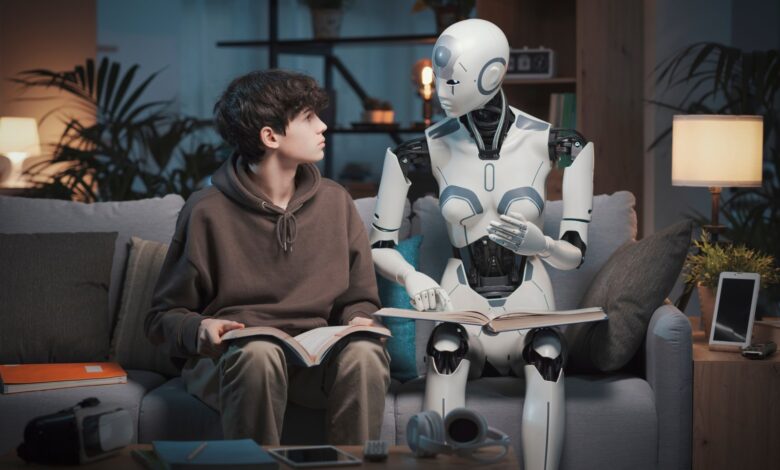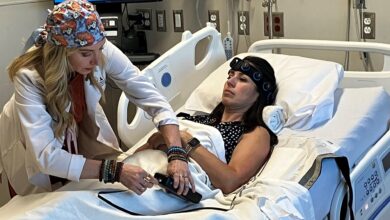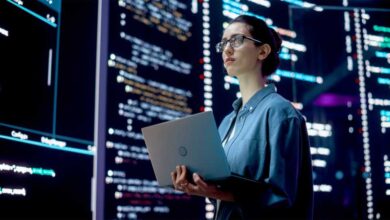Children must adapt to world obsessed with AI: Turkish scientist

With artificial intelligence present in every aspect of life and robots expected in living spaces soon, many wonder how artificial intelligence will change the field of education.
Professor Gonca Kızılkaya Cumaoğlu, vice dean of Yeditepe University’s Faculty of Education and head of the Department of Computer Education and Instructional Technologies, evaluated the opportunities that artificial intelligence will offer in the field of education and gave information about the sustainable artificial intelligence ecosystem.
“Education about artificial intelligence needs to start early; we need to prepare children for the new world of artificial intelligence,” Cumaoğlu said.
Reiterating that Türkiye has launched serious initiatives on this issue since 2020, Cumaoğlu said: ”First, the TÜBİTAK Artificial Intelligence Institute (BİLGEM-YZE) was established. Then, in 2021, the Presidency enacted the National Artificial Intelligence Strategy, the first national strategy document in the field of artificial intelligence.”
”The main goal was to create a sustainable artificial intelligence ecosystem. Other important issues were to train experts in this field, to encourage social adaptation and regulations and to accelerate workforce transformation.”
Noting that an unpredictable world awaits us, Cumaoğlu mentioned: ”When artificial general intelligence (AGI) is reached, which is not a very distant future, experts think that there will be a serious employment problem in the world.”
”The first thing our children will need is new literacies. From artificial intelligence literacy to new media and digital literacies, we will have no barriers to educating ourselves in the rest of the subjects,” she added.
Systematic breakdown
Pointing out that changes in educational systems are usually made and implemented quickly, Cumaoğlu said: ”However, I think there will be a top-down break here.”
“Because while we are thinking about taking action, it seems that employment-related transformations that will radically affect social life will first oblige the university system and then an education system in which all needs are redefined.
“We can even say that artificial intelligence has integrated itself into the educational system without us integrating it into the education system. For example, the Council of Higher Education published an ‘Ethical Guide on the Use of Productive Artificial Intelligence in Scientific Research and Publication Activities.’ In other words, we have a guide for its use without the subject being included in the curriculum, because as researchers, our students and we are actively using it,” she continued.
Range of opportunities
Pointing to the opportunities that artificial intelligence will offer in learning and learning environments apart from systemic changes, Cumaoğlu explained: ”Personalized teaching, with artificial intelligence, can optimize the learning process by developing educational methods and materials tailored to the individual needs, learning speeds, interests and abilities of students.”
“In this model, by taking into account the strengths and weaknesses of the student, specific learning paths and goals are determined, thus ensuring that the student learns in the most efficient way. For feedback and mentoring, artificial intelligence can help students correct their mistakes and learn by providing faster feedback. By closely monitoring the progress of the individual, it can provide guidance and support for deficiencies.”
“It supports individual learning. On the other hand, it can support teachers in the context of material development. For example, they can create learning materials designed based on students’ interests and strengths. The fact that all this can be done quickly and qualitatively is an important opportunity to make the teaching processes in the school more efficient. Regarding learning analytics, if we look at it from a slightly bigger perspective, learning analytics and predictive analysis working with big data will become much easier with artificial intelligence. Learning analytics is a research field that enables data-driven decision-making and early intervention by analyzing students’ performance data to regulate learning and the environment,” she added.
Cumaoğlu also provided information about what should be covered in each age range.
”In the early childhood period (ages 3-6), basic digital skills and familiarity with technology can be gained through educational games and applications.
”During the primary school period (ages 7-12), Algorithmic thinking can be gained with simple programming languages such as basic programming and coding skills. For Digital Literacy, safe internet use, information search and evaluation skills can be presented. To gain new media literacy, the skills of understanding, evaluating and producing media content can be addressed.
”For the middle school period (ages 12-15), basic concepts and working principles of artificial intelligence and basic applications can be taught. Online ethics, security and privacy issues can be covered. In terms of media and information literacy, information verification, evaluation of news sources and media criticism can be included in the program.
”In high school (ages 15-18), artificial intelligence applications, data analysis and machine learning, web development for more advanced web applications, mobile application development and cybersecurity can be covered.
”For new media literacy, digital media production, source evaluation, privacy and security, copyright and ethical use, digital footprint management, social media management and online communication skills should also be examined. In this process, families and educators should guide children and raise awareness about the safe and ethical use of technology,” she explained.



